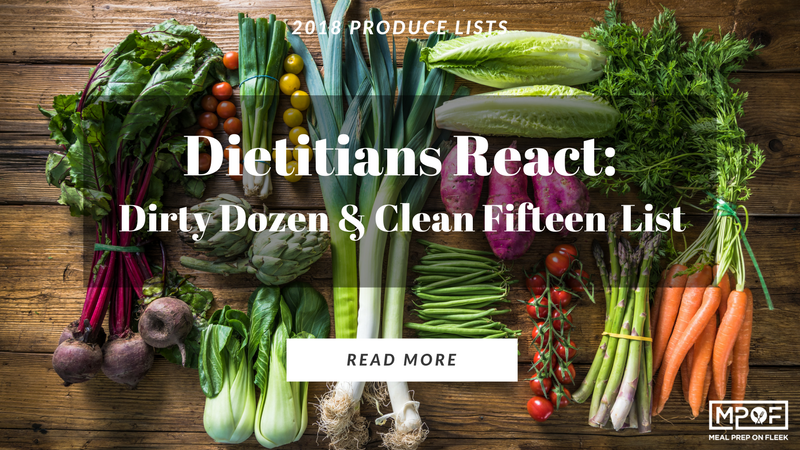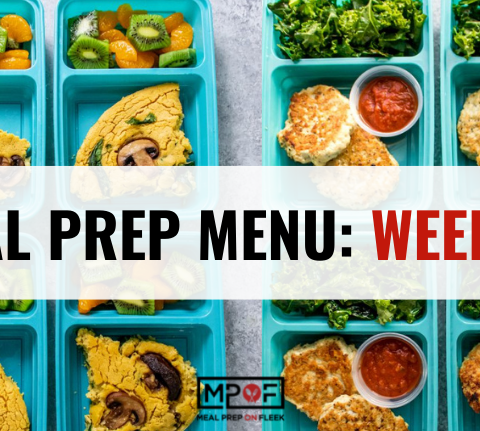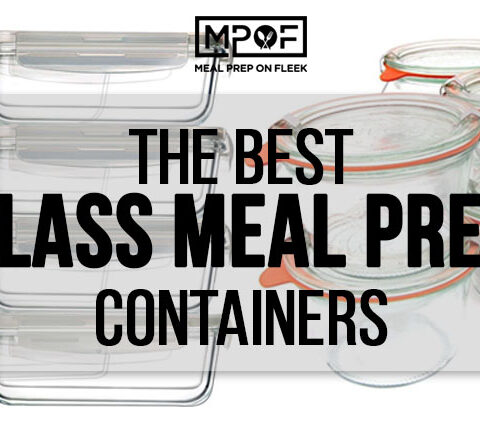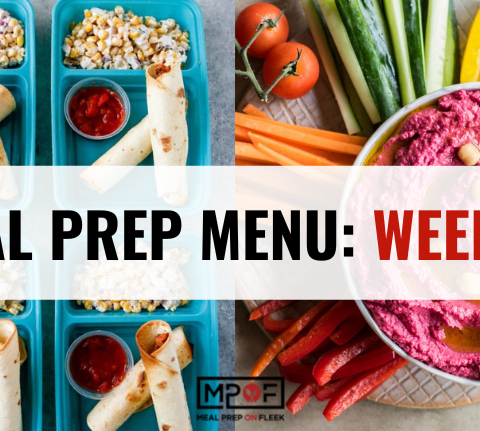The Environmental Working Group (EWG), a group whose mission is to empower people to live healthier lives in a healthier environment, recently released it’s 2018 Dirty Dozen and Clean Fifteen produce list. Some are calling the Dirty Dozen produce list a scare tactic and saying that it, "causes unnecessary fear when choosing produce items," but there can be some positive benefits to knowing how your food is grown.
The goal of this article is not to scare you but instead to help you make food choices that you're comfortable with and sharing what leading experts say about the food you're eating.
2018 Dirty Dozen Produce List:
- Strawberries
- Spinach
- Nectarines
- Apples
- Grapes
- Peaches
- Cherries
- Pears
- Tomatoes
- Celery
- Potatoes
- Sweet Bell Peppers
- Hot Peppers (as a bonus)
Dietitians React:
This year's report found that almost 70 percent of non-organic samples tested positive for at least one pesticide. (In many cases, the numbers were much higher). And get this: A single strawberry sample harbored 22 different pesticide and pesticide breakdown residues. But what does this really mean? We asked a group of the nations most respected dietitians to share their thoughts on these findings and here is what they said:
Keri Gans, RDN: “The ‘Dirty Dozen’ list created by the Environmental Working Group is rather misleading. It compares levels of pesticide residue in produce to each other reporting on those with the highest amounts; however, it does not substantiate that those levels found propose any health risk to the consumer. And that is because, they do not... Bottom line: The average consumer should be adding more fruits and veggies to their diet and feel safe with their choices, whether conventional or organic.”
Keri Gans, RDN, Nutritionist and Yoga Teacher in NYC, Author of The Small Change Diet, Creator of The Keri Report.
Stephanie Edson, MS, RDN, LD, LMNT: "The 'Dirty Dozen and Clean 15' list is biased and not evidenced based. This list causes unnecessary fear when choosing produce items. As long as we wash produce before consuming, there is no concern." Additionally she stated, "Organic produce is also much more expensive and not affordable for most families. Since the majority of individuals do not eat enough fruits and veggies as is and it is far more advantageous for health to eat more produce than limit it for fear of pesticides or eat less because of higher prices. Until peer reviewed research studies conclude the need to eat organic, there is no need for worry." - Stephanie Edson, MS, RDN, LD, LMNT is Regional Wellness Specialist and Registered Dietitian with SpartanNash and can be reached at stephanie.edson @ (spartannash.com). Follow her on Twitter @HometownRDN
Frances Largeman-Roth, RDN: "When consumers see lists like the EWG’s Dirty Dozen list, it is very alarming. It sends the message that the produce on the list are not safe to consume when grown conventionally. But according to the United States Department of Agriculture (USDA), the pesticide residues on these fruits and vegetables are well below safety levels set by the Environmental Protection Agency (EPA) and pose no risk to infants and children. It’s really up to consumers to decide whether to purchase conventionally grown or organically grown produce. I’m a fan of both, just as long as they’re eating it! Most Americans aren’t getting nearly enough fruits and veggies, so I would hate to see people avoiding healthful items that are on the Dirty Dozen list." - Frances Largeman-Roth, RDN, nutrition expert and author of Eating in Color.
Jim White: "If someone is worried about consuming residual pesticides, these lists are a good resource to guide purchasing decisions. The dirty dozen list serves as a good recommendation of the fruits and vegetables that are worth the money to buy organic, while the clean 15 serves as a list of the foods that you can save some money by not buying organic. For the most part, there’s been little change to the foods on these lists the last 2 years, with the primary changes being a shuffling of the order. We don’t typically see drastic changes to these lists, so they serve as a good guide for what to purchase organic and what to save money on by buying conventional, and you don’t have to stay on top of checking for these lists. However, there isn’t definitive evidence on the long-term effects of pesticide exposure. It’s been hypothesized that chronic exposure to pesticides induces changes in antioxidant enzymes which can increase oxidative damage, which can, in turn, lead to cancer. While there is evidence to support that chronic exposure to pesticides does induce changes in antioxidant enzyme activity, there isn’t enough evidence to suggest that this in turn increases the risk of cancer. In fact, a major meta-analysis of data from 1975-1991 found that farm workers repeatedly exposed to pesticides actually experienced lower rates of cancer than the general population, but the authors hypothesized that this may be the result of clean air, lower prevalence of smoking, and a more active lifestyle. If you can’t afford organic, the benefit of consuming these fruits and vegetables far outweighs the potential, unproven risks." - Jim White Fitness and Nutrition Expert
Sources referenced:
Maroni M and Fait A. Health effects in man from long-term exposure to pesticides. A review of the 1975-1991 literature. Toxicology. 1993; 78(1-3): 1-5.
Lopez O, Hernandez AF, Rodrigo L, et al. Changes in antioxidant enzymes in humans with long-term exposure to pesticides. Toxicol Lett. 2007; 171(3): 146-153.
Related Article - 13 Expert Tips for Shopping the Farmers Market
Hillary Pride RD, LD: "As far as the Dirty Dozen and Clean 15, I make sure shoppers don't let these lists deter them from buying produce. I think it is important to note that the levels of any detected pesticides on produce from the Dirty Dozen are well below set tolerance levels. As a supermarket dietitian I encourage all of my shoppers to work towards increasing their fruit and vegetable intake whether they choose organic or conventional. If one shopper chooses to shop using the Dirty Dozen and Clean 15 but they can afford to load up at least half of their cart with colorful produce, great! What I don't like to see is a shopper on a limited budget read the Dirty Dozen and feel afraid to buy conventional produce so they ultimately choose to go without buying produce at all because the organic option might not fit into their budget. For these and any shoppers I reiterate that the benefits of eating a produce rich diet will outweigh any potential risks of pesticide residue. Hillary Pride RD, LD, 2017 Produce for Better Health Foundation Supermarket Dietitian of the Year, @eatswithpride
The Clean 15 Produce List
- Avocados
- Sweet Corn*
- Pineapples
- Cabbage
- Onions
- Frozen Sweet Peas
- Papayas*
- Asparagus
- Mangos
- Eggplant
- Honeydew
- Kiwi
- Cantaloupe
- Cauliflower
- Broccoli







